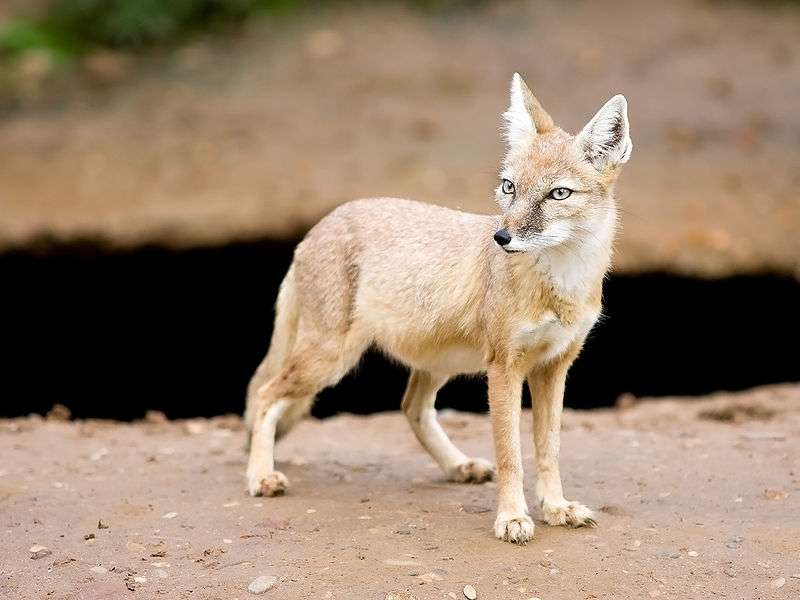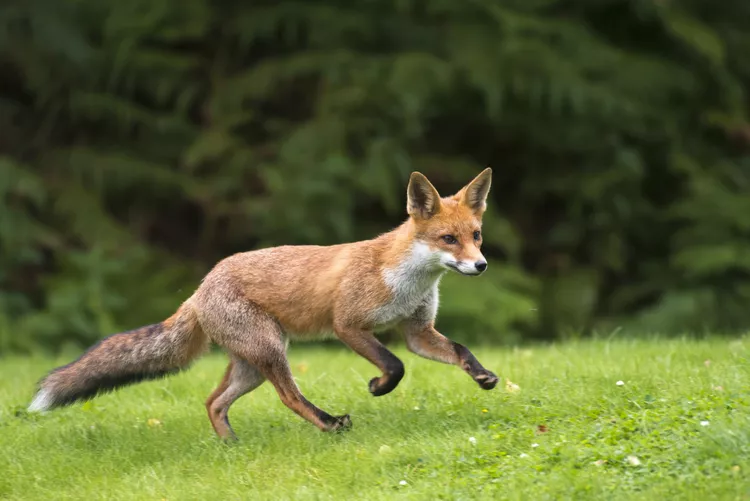
Description
Scientific Name: Vulpes corsac
Lifespan: 9 to 13 years in captivity and 9 to 13 years in the wild
The Corsac Fox is a species of Asian fox that is widely dispersed throughout its territory. The underparts of the animal are paler and have some light patterns on their chin, throat, and mouth, while the majority of their body is coated in soft grey to yellowish fur. Winter brings with it a thickening of the hairy coat that has a silkier feel, a straw-gray colouring, and a darker line that runs down the back half.
A stocky build, medium height, and short, strong legs are all present. In comparison to other fox species, the skull is large; the face is expressive; it has a pair of long, almond-shaped eyes that are thinly spaced; the muzzle is long and has dark nostrils (nose). Like the majority of other fox species, it has a long, densely bushy tail.

Behavior
The corsac fox is allegedly nocturnal in the wild. It’s interesting that they are constantly active in captivity. These foxes can climb well, but because of their moderate running pace, a slow dog can quickly catch them. They have keen vision, hearing, and smell senses. These foxes are naturally nomadic. Since hunting is difficult during the cold winter months due to ice and severe snow, they do not keep a stable range of their habitats instead migrating southward.
These canids create small hunting parties throughout the winter, which frequently include mated pairs and their developing young. Compared to other fox species, corsac foxes are more sociable. Numerous individuals have been observed cohabitating with other foxes in shared or nearby burrows, which resemble “corsac cities.” The burrows of corsac foxes are frequently taken over by other creatures as marmots, badgers, ground squirrels, etc. They typically construct shallow, straightforward burrows. These creatures typically leap into the air before diving down on their prey to seize it. By doing so, the likelihood of escaping is decreased.
Distribution
A species of Asian fox with a vast geographic distribution is the Corsac Fox. The semi-desert regions and broad, grassy steppes are home to corsac foxes. Mountains and areas covered in flora are things they tend to stay away from.
As Pet
Corsac foxes are easier to potty train than other foxes, despite their tendency to scent mark and their powerful urine. If the fox isn’t given a frequent bath, its coat will smell. If you keep this species indoors, provide a climbing structure. One time a year, in the spring, the fox significantly sheds its coat. They prefer rodents like hamsters, ground squirrels, voles, gerbils, and jerboas. Along with pikas and birds, they would also eat a lot of insects. These foxes are scavengers and are frequently observed consuming human waste and carrion.
Table





